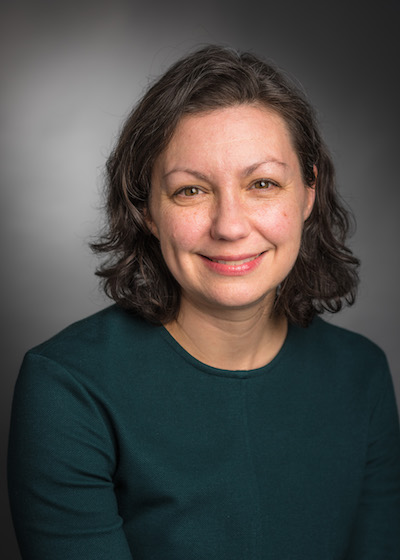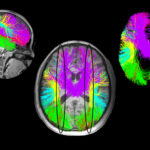Most parents of children with advanced cancer don’t recognize their low chance of cure

End-of-life care for children with advanced cancer is often very intensive, and can cause much suffering. When parents recognize that a cure is unlikely, they often choose to spare their children from aggressive treatments and focus on the quality of their child’s remaining time. But a study published Oct. 4 in the journal Cancer finds that only 26 percent of parents of children with advanced cancer recognized their child’s poor prognosis.
“We had previously found there’s a lot of optimism about children’s cancer that doesn’t correspond to what doctors think is the medical reality,” says Jennifer Mack, MD, MPH, of Dana-Farber/Boston Children’s Cancer and Blood Disorders Center, the study’s lead investigator. “We were interested in how this would play out in advanced cancer, where it can influence decisions that parents make.”
Mack and her colleagues enrolled 95 parents of children with relapsed or refractory high-risk neuroblastoma from nine pediatric centers, representing 63 percent of all parents they approached. The children were considered to have a chance of cure of less than 25 percent.
It’s hard for a clinician to tell a parent there’s no realistic chance of cure, so maybe we’re not as clear and direct about it as we should be… It’s important to check parents’ understanding.
Parents (mostly mothers) were questioned while the child was alive and while parents were making decisions. When asked, “How likely do you think it is that your child will be cured of neuroblastoma?” 24 percent said “more than 90 percent,” 13 percent reported a 75 to 90 percent chance, and 19 percent reported a 50 to 74 percent chance. Only 26 percent of parents recognized that the likelihood of cure was less than 25 percent.
Cure versus quality of life
When parents were asked, “What would you say is your most important goal of your child’s care right now?” 72 percent chose cure, 10 percent chose longer life, and 18 percent chose quality of life. When parents did recognize the child’s poor prognosis, they were more likely to prioritize quality of life.

Parents also chose quality of life when asked in the abstract “what a good parent” would do when faced with a low likelihood of cure — even parents who didn’t recognize that their child was in that situation.
Although the study involved neuroblastoma, Mack believes the pattern would be similar for other kinds of cancer. “We could potentially spare kids some suffering that comes from some of the decisions,” she says.
Just over 40 percent of parents expressed regret about their most recent care decision, particularly if the child had received higher intensity medical care, had gained limited benefit from their most recent treatment, or were suffering from symptoms.
Clinician take-homes
Mack believes oncologists themselves may be partly responsible for parents’ overly optimistic stance. As a pediatric oncologist, she has a particular interest in cancer communication.
“Maybe we are having trouble communicating [bad] news,” she says. “It’s hard for a clinician to tell a parent there’s no realistic chance of cure, so maybe we’re not as clear and direct about it as we should be.”
She notes that there are some studies focused on training clinicians to better communicate with patients about adult cancers, and thinks similar interventions are needed in pediatric cancer.
“It’s important to check parents’ understanding,” Mack says. “How directly are we conveying the information? Do we offer qualifiers? Are we comfortable coming back to discussing prognosis over time? I think it’s really hard to get it right. Also, seeing how much parents don’t want to hear can influence what we tell them.”
She suggests providing straightforward information about what’s medically known about whether a child in a given situation can be cured. “If there’s not a realistic chance, I talk about how much time they have and what that time might be like, and the spectrum that we see, without hedging, without euphemisms. What will your child feel like? What will they need? How can we make them feel good? All those things are part of the conversation too.”
Cancer communication and more
Mack discusses her clinical and research interests in this short video:
The study was funded by the Patient-Centered Outcomes Research Institute (PCORI) and the Friends for Life Neuroblastoma Research Fund. Other participating centers were the Roswell Park Cancer Institute (Buffalo); Children’s Hospital of Philadelphia; University of Washington School of Medicine; Seattle Children’s Research Institute; Children’s Hospital Los Angeles; Cook Children’s Hospital (Fort Worth); Memorial Sloan-Kettering Cancer Center (New York); St. Jude Children’s Research Hospital (Memphis); Comer Children’s Hospital, University of Chicago; Emory University School of Medicine (Atlanta); and Massachusetts General Hospital. Lisa Diller, MD, of Dana-Farber/Boston Children’s was senior author. See the paper for a complete list of authors.
Learn more about Dana-Farber/Boston Children’s Cancer and Blood Disorders Center.
Related Posts :
-

Parsing the promise of inosine for neurogenic bladder
Spinal cord damage — whether from traumatic injury or conditions such as spina bifida — can have a profound impact on bladder ...
-

Unveiling the hidden impact of moyamoya disease: Brain injury without symptoms
Moyamoya disease — a rare, progressive condition that narrows the brain’s blood vessels — leads to an increased risk of stroke ...
-

A new druggable cancer target: RNA-binding proteins on the cell surface
In 2021, research led by Ryan Flynn, MD, PhD, and his mentor, Nobel laureate Carolyn Bertozzi, PhD, opened a new chapter ...
-

Forecasting the future for childhood cancer survivors
Children are much more likely to survive cancer today than 50 years ago. Unfortunately, as adults, many of them develop cardiovascular ...





